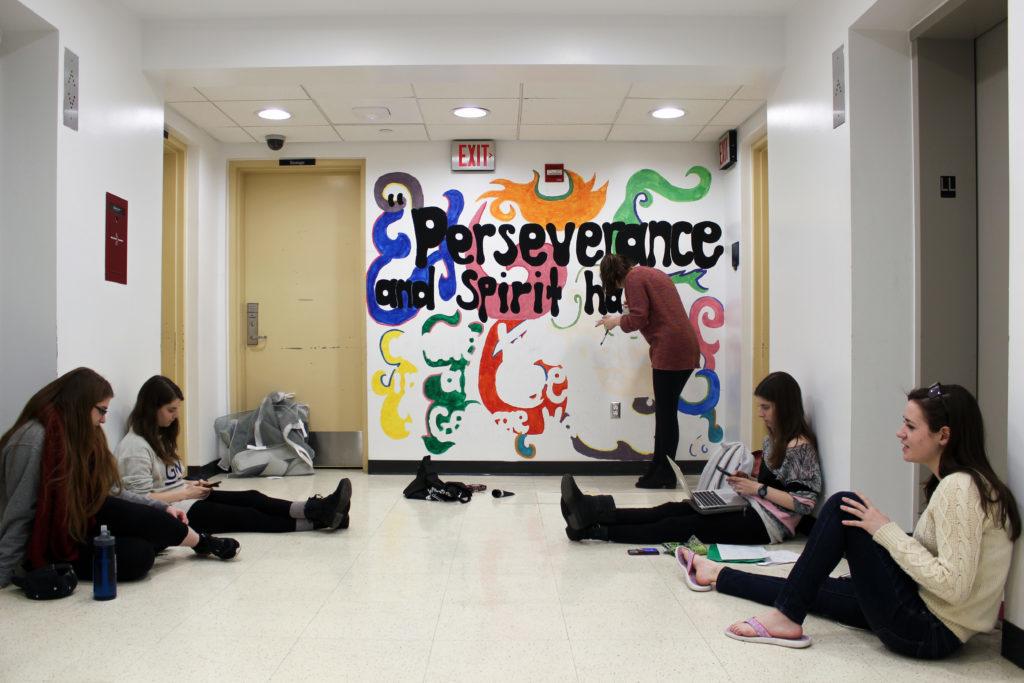Officials are making small updates to residence halls that are awaiting larger renovations.
Residence halls on both the Foggy Bottom and Mount Vernon campuses are getting amenities like bike racks, bottle fillers and new furniture. Officials said the updated features, although not essential, will enhance student living spaces.
University Spokesman Brett Zongker said funding allocations vary based on the nature of the renovation, from routine maintenance to urgent repairs to large-scale building facelifts.
Ongoing and unfinalized projects include adding a bike storage in the lower level of 1959 E Street as well as one in or near Madison Hall, and relocating lounge furniture from academic buildings to common rooms in Merriweather and Hensley halls, Zongker said.
“Sustainable features such as bike racks and enhancing lounge furnishings are examples of how the University consistently works to accommodate student requests and collaborate with RHA and other student leadership as to how best accomplish these improvements,” Zongker said.
Zongker said single renovations are often completed by multiple University departments including the Center for Student Engagement, the Division of Operations, the Division of Student Affairs and GW Housing with student groups like the Resident Hall and the Student associations.
In 2014, GW committed to renovating every residence hall on a seven-year cycle, allocating about $6 million each summer to the renovations.
Renovations began in 2014 with International House and the Dakota, which had not been renovated in 15 years, followed by Strong and Mitchell halls in 2015. This past summer, officials signed off on installing new floors in JBKO Hall, new furniture in Thurston and Mitchell halls and making several renovations to 2109 F Street, including new bathrooms and kitchens.
RHA President Ali Belinkie said her group works closely with the Division of Operations, which funds and installs all housing projects, to make sure students have input on renovations.
“We are just student voices of what is needed. They are really great partners for working on these advocacy initiatives,” Belinkie said.
Belinkie added that the RHA hears about what continuous improvements are needed from individual hall council representatives as well as student feedback in general body meetings and student’s requests in-person or online.
Division of Operations has offered whiteboards to residence halls and will still accept requests from halls that have not yet received them, Belinkie said.
While student feedback is needed, the Division of Operations makes decisions based on what is doable, not just based on what students want, Belinkie added.
RHA is also leading a fall semester project for residents to design and paint murals in residence halls. The last of the 13 murals around campus will be completed this month, Belinkie said.
While more renovations are on the docket, Thurston Hall has yet to be updated despite slow elevators and moldy bathrooms. Thurston received new kitchen furniture over winter break before students returned to campus. In 2014, officials cited concern that the building space that accommodates half of each year’s freshman class and incoming students during Colonial Inauguration, cannot be spared. GW currently rests at 99.8 percent capacity.
While final decisions will be made later this spring, buildings currently under consideration for renovation this summer include JBKO, FSK, Guthridge, Shenkman and Fulbright halls, according to the housing website.





